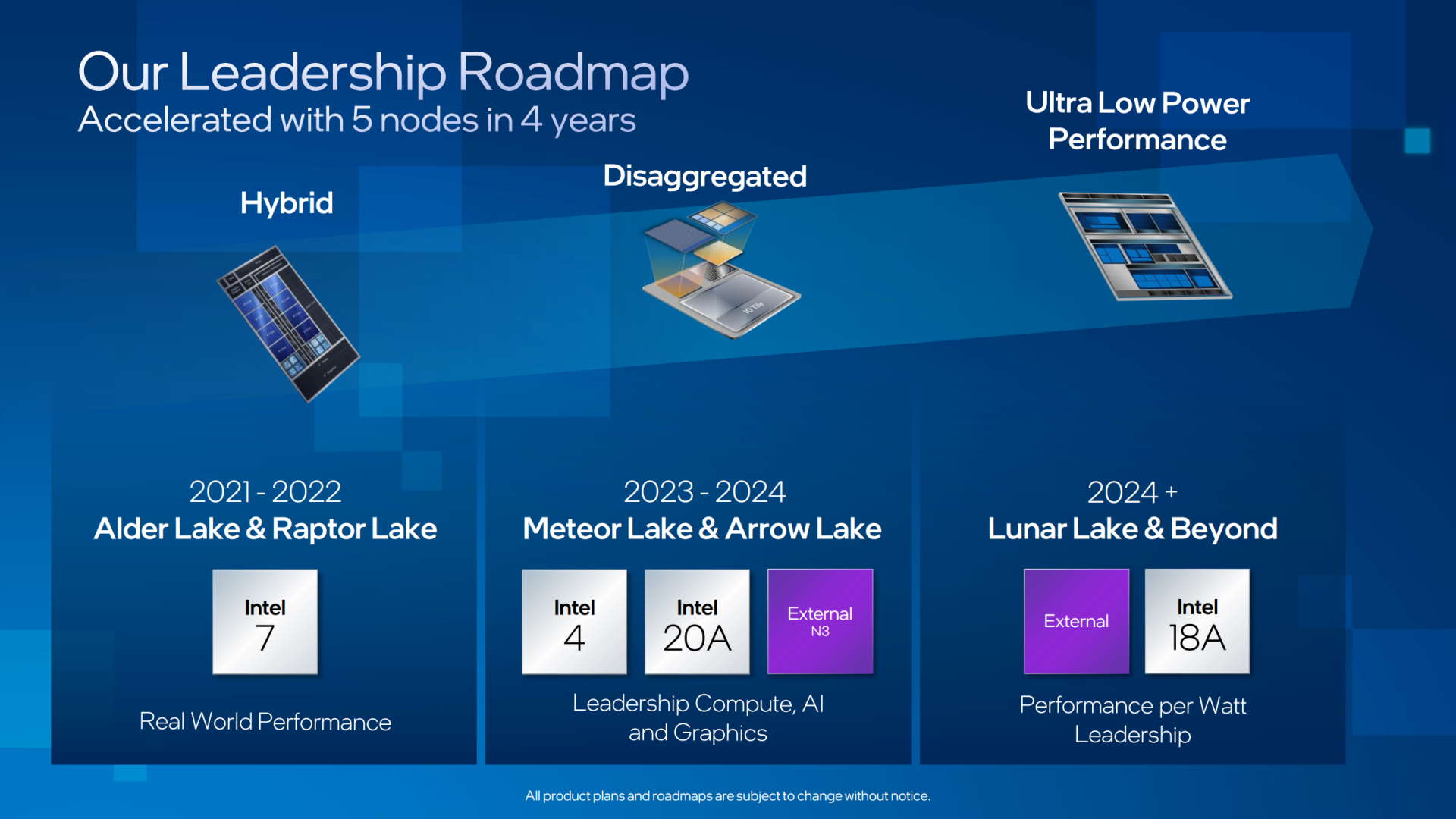Intel puts TSMC on notice with step towards Angstrom era chips
Intel says it has completed development of its upcoming 20A and 18A chip production processes. The first chips built on the first of these new nodes—the 20A node—will be made in the first half of next year.
At least, that's what Intel is claiming. Several months into 2023 and we're yet to see any CPUs built on Intel 4, the node preceding Intel 20A. However, according to UDN (via Tom's Hardware), Intel China President Wang Rui says the company has ironed out all the specifications and performance targets for 20A and 18A.
Highlights for 20A include gate-all-around transistors and backside power delivery, both of which are big advances and should help to shrink transistor size and keep power consumption under control. 18A will build on those refinements and is reportedly going so well that Intel rescheduled it from 2025 to the second half of 2024.
If Intel can pull that off, it will very much be back in the game, fully competitive with TSMC in terms of chip production tech. Indeed, Intel thinks 18A will be the most advanced node in the world in the second half of next year, overtaking TSMC.
That would be a stellar achievement. It's also a little confusing given that Intel has yet to sell a single chip using that Intel 4 node, which has to come before 20A and 18A.
What's more, we're not really expecting to see any Intel 4 chips until the second half of 2023. That implies that Intel will be rolling out no fewer than three nodes in the space of a year. So, that's Intel 4 in the second half of this year, 20A in the first half of next year and 18A in the second half of 2024.

However, some of the terminology used by Intel may be creating unrealistic expectations. Intel says its expectations are that 20A will be "manufacturing ready" in the first half of next year, with 18A achieving the same status in the second half of the year.
The thing is, back in mid 2021 Intel was indicating that the Intel 4 node would achieve that status in the second half of 2022 and you know where we're at with those chips as of three months into 2023.
If Intel 4 Meteor Lake CPUs do squeak in before the end of the year, that would imply an 18 month lag between a node being "production ready" and chips actually appearing on the market.
Apply that to 20A and 18A and you have chips based on the former possibly appearing right at the end of 2025 and 18A CPUs in 2026. That seems like a more realistic schedule given where Intel is right now, which is selling CPUs based on its Intel 7 tech, fully two nodes behind 20A.
Time will tell, and Intel certainly has plenty to prove.

Post a Comment